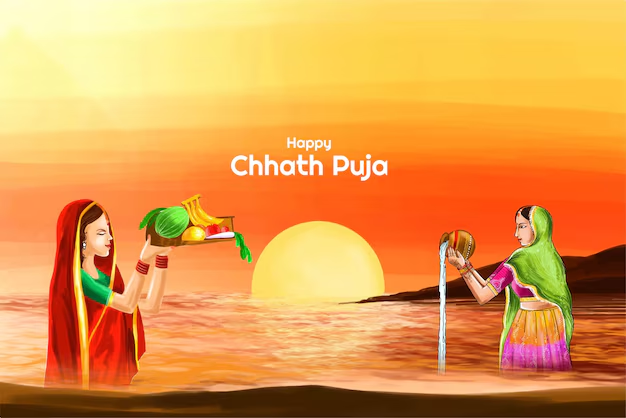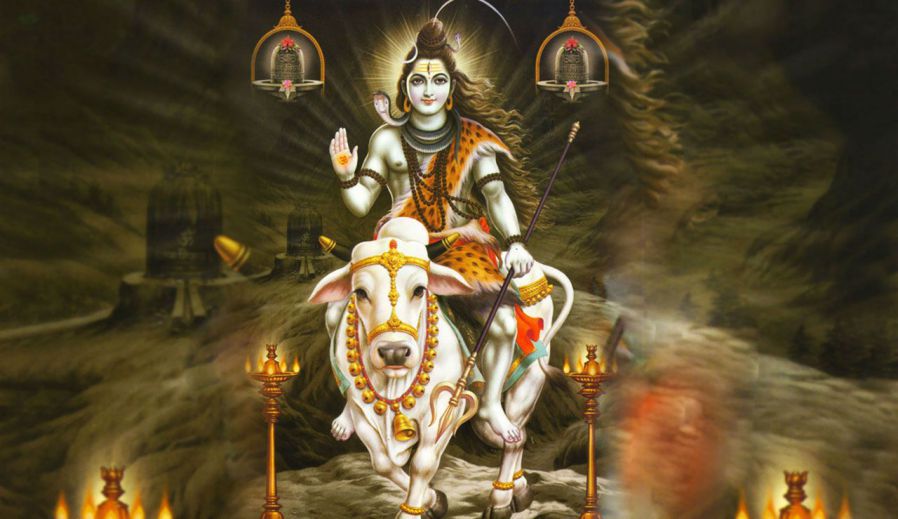
Maa Mahagauri – The Radiant Goddess of Purity and Peace
Blog
On the eighth day of Navratri, devotees worship Maa Mahagauri—symbol of purity, serenity, and divine grace. Her blessings remove past sins and lead the soul toward peace and spiritual elevation.
665
Shivam Gangwar
8 min
Apr 05, 2025
Maa Mahagauri – The Goddess of Purity and Peace
The eighth day of Navratri, also known as Durga Ashtami, is dedicated to Maa Mahagauri, the radiant and serene form of Goddess Durga. Her name signifies "Maha" meaning great and "Gauri" meaning fair or white — a symbol of absolute purity, calmness, and spiritual strength.
🌼 Who is Maa Mahagauri?
Maa Mahagauri is the eighth manifestation of Goddess Durga. It is believed that after intense penance to attain Lord Shiva, her body became covered in dirt and turned dark. Pleased with her devotion, Lord Shiva bathed her in the holy Ganges, restoring her to a glowing, white form. Thus, she became known as Mahagauri.
Her divine form is enchanting:
- She rides a bull (Vrishabha).
- She has four arms — one holds a trident (trishul), one a damaru (drum), and the other two are in the Abhaya (fear-dispelling) and Varada (boon-giving) mudras.
- She wears white clothes and radiates a brilliant aura of peace and serenity.

🕉️ Spiritual Significance of Maa Mahagauri
Maa Mahagauri symbolizes purity of heart, soul, and mind. Her blessings purify the devotee from past sins and offer a path to liberation (moksha).
Benefits of Worshipping Maa Mahagauri:
- Purification of karma and removal of sins
- Peace and mental stability
- Marriage and relationship harmony
- Success in personal and professional life
- Inner calm and spiritual progress
🔮 Symbolism of Maa Mahagauri
White color represents tranquility, cleanliness, and enlightenment.
She is associated with the Crown Chakra (Sahasrara), signifying the union with divine consciousness.
Her vehicle, the bull, is a symbol of righteousness and strength.
📜 Puja Vidhi (Worship Method)
On Ashtami, devotees perform the following rituals to please Maa Mahagauri:
Wake up early, take a bath, and wear white clothes.
Place the idol or image of Maa Mahagauri on a clean altar.
Offer white flowers, coconut, milk sweets, and fruits.
Light a ghee lamp and incense sticks.
Chant the mantra:
“ॐ देवी महागौर्यै नमः”
Recite Durga Saptashati or Devi Stuti.
Perform Kanya Pujan — worshipping nine little girls as embodiments of the goddess.
Conclude with Aarti and bhajans.
🧘♀️ Maa Mahagauri and Inner Transformation
Maa Mahagauri is not just the remover of external suffering but also the illuminator of inner darkness. She leads us from ignorance to wisdom, from restlessness to peace, and from ego to humility. Her grace teaches us to stay calm and pure even during life’s storms.
🌟 Conclusion
On this sacred day of Ashtami, let us offer our prayers to Maa Mahagauri, the beacon of purity and compassion. By surrendering to her divine energy, we invite peace, purity, and spiritual elevation into our lives.
May Maa Mahagauri bless you with serenity, wisdom, and success.
Jai Mata Di! 🙏
मां महागौरी – पवित्रता और शांति की देवी
नवरात्रि का आठवां दिन, जिसे दुर्गा अष्टमी भी कहा जाता है, देवी दुर्गा के आठवें स्वरूप मां महागौरी को समर्पित होता है। "महा" का अर्थ है महान और "गौरी" का अर्थ है उज्ज्वल या श्वेत – यह नाम निर्मलता, शांति और आध्यात्मिक शक्ति का प्रतीक है।
🌼 मां महागौरी कौन हैं?
मां महागौरी, देवी दुर्गा का आठवां स्वरूप हैं। मान्यता है कि उन्होंने भगवान शिव को प्राप्त करने के लिए कठोर तप किया। इस तप से उनका शरीर मैला और काला हो गया। उनकी भक्ति से प्रसन्न होकर भगवान शिव ने उन्हें गंगा जल से स्नान कराया, जिससे उनका शरीर पुनः गौर वर्ण और चमकदार हो गया। तभी से उन्हें महागौरी कहा गया।
उनका दिव्य स्वरूप अत्यंत आकर्षक होता है:
- वे वृषभ (बैल) की सवारी करती हैं।
- उनके चार हाथ होते हैं – एक में त्रिशूल, दूसरे में डमरू, तीसरा अभय मुद्रा और चौथा वरमुद्रा में होता है।
- वे सफेद वस्त्र धारण करती हैं और उनके शरीर से शांति और सात्विकता की ऊर्जा प्रस्फुटित होती है।
🕉️ मां महागौरी का आध्यात्मिक महत्व
मां महागौरी मन, आत्मा और कर्म की पवित्रता की प्रतीक हैं। उनकी कृपा से व्यक्ति के पापों का शमन होता है और मोक्ष की प्राप्ति का मार्ग प्रशस्त होता है।
मां महागौरी की उपासना से मिलने वाले लाभ:
- पापों का नाश और कर्मों की शुद्धि
- मानसिक शांति और मौन साधना की शक्ति
- वैवाहिक सुख और पारिवारिक सौहार्द
- जीवन में सफलता और प्रगति
- आध्यात्मिक ज्ञान और आत्मिक विकास
🔮 मां महागौरी का प्रतीकात्मक महत्व
उनका श्वेत स्वरूप शांति, पवित्रता और मुक्ति का प्रतीक है।
वे सहस्रार चक्र (क्राउन चक्र) से जुड़ी हुई हैं, जो दिव्य ऊर्जा और आत्मा के उच्चतम स्तर का प्रतिनिधित्व करता है।
उनका वाहन बैल (वृषभ) धर्म और बल का प्रतीक है।
📜 पूजन विधि (पूजा कैसे करें)
अष्टमी के दिन, भक्त मां महागौरी की पूजा इस प्रकार करते हैं:
प्रातः स्नान कर स्वच्छ वस्त्र पहनें और मां का ध्यान करें।
देवी की मूर्ति या चित्र को स्वच्छ स्थान पर स्थापित करें।
मां को सफेद फूल, नारियल, दूध से बनी मिठाई और फल अर्पित करें।
घी का दीपक और धूपबत्ती जलाएं।
जाप करें:
“ॐ देवी महागौर्यै नमः”
दुर्गा सप्तशती या देवी स्तुति का पाठ करें।
कन्या पूजन करें – नौ कन्याओं को देवी का रूप मानकर पूजन और भोजन कराएं।
अंत में आरती और भजन करें।
🧘♀️ मां महागौरी और आत्मिक जागृति
मां महागौरी केवल बाह्य जीवन की बाधाओं को ही नहीं हटातीं, बल्कि आंतरिक अज्ञानता, अहंकार और अशुद्ध विचारों को भी समाप्त करती हैं। उनकी कृपा से आत्मा का प्रकाश प्रकट होता है और शुद्धता, प्रेम और दिव्यता का मार्ग प्रशस्त होता है।
🌟 निष्कर्ष
अष्टमी के पावन अवसर पर आइए, हम मां महागौरी की उपासना कर उनके दिव्य गुणों को अपने जीवन में उतारें। वे हमें पवित्रता, शांति और सफलता का आशीर्वाद प्रदान करती हैं।
जय मां महागौरी!
जय माता दी! 🙏





